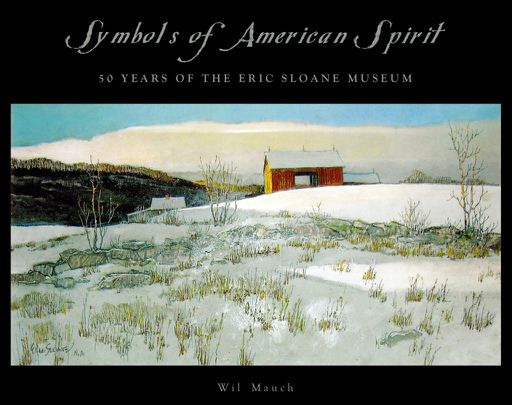The Eric Sloane Museum stands as a cherished testament to the life, art, and enduring legacy of the renowned American artist, Eric Sloane. Nestled in a captivating setting, the museum serves as a window into the past, preserving the rich cultural heritage of rural America through its exquisite collection of Sloane’s artworks, personal belongings, and literary treasures. As a vital cultural institution, the Eric Sloane Museum plays a pivotal role in educating visitors about the profound impact of Sloane’s art and writings on American history and heritage. Through captivating exhibits and engaging displays, the museum offers invaluable insights into Sloane’s artistic process, his deep appreciation for nature, and his unwavering dedication to preserving the beauty of the American landscape. Step into the Eric Sloane Museum, and embark on an immersive journey that celebrates the artistic brilliance of Eric Sloane, offering a profound appreciation for the simplicity, charm, and resilience of the rural America he so passionately captured in his art.
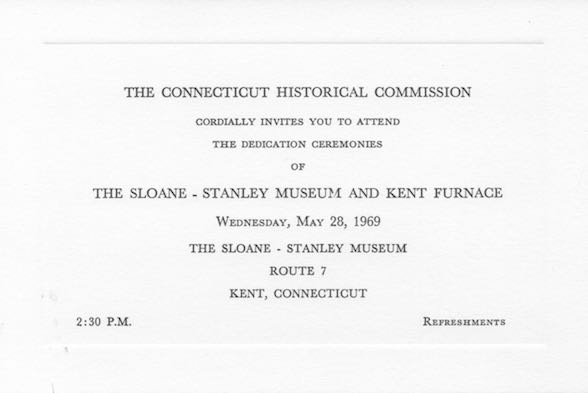
For half a century, visitors national and international alike have traveled to Kent, Connecticut, to obtain perspective on one of America’s most enduring artists. Since opening on 30 May 1969, the Eric Sloane Museum has presented the artist’s collection of early American tools and original works of art, and serves as a source of education, inspiration, and as a touchstone for tens of thousands of visitors. It is, for so many reasons, a remarkable achievement and testament to a man aptly described as “in constant motion”. How did this delightful museum, the exhibits envisioned and crafted by the artist himself, come to pass? It began with a town dump and an art show – and became a national treasure. -From Symbols of American Spirit: 50 Years of the Eric Sloane Museum
I have happily spent hundreds of hours over the last nearly quarter of a century researching the life and works of Eric Sloane, N.A. (1905-1985) and the museum he founded. What follows on this page is a random sampling of some of the videos, photographs, and documents I have used in various publications and exhibits. If you have something to share of The Eric Sloane Museum, please email me. I will be sure to attribute the new addition to you.
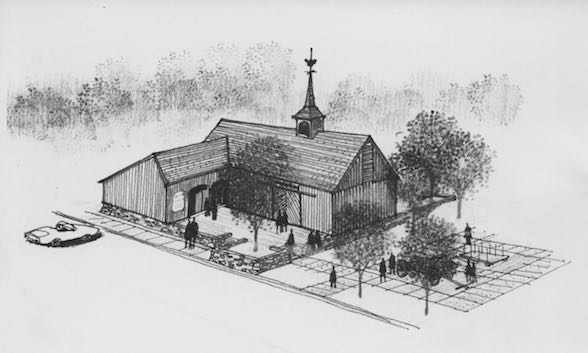
Architect Albert Walter Green’s rendering of the proposed museum building
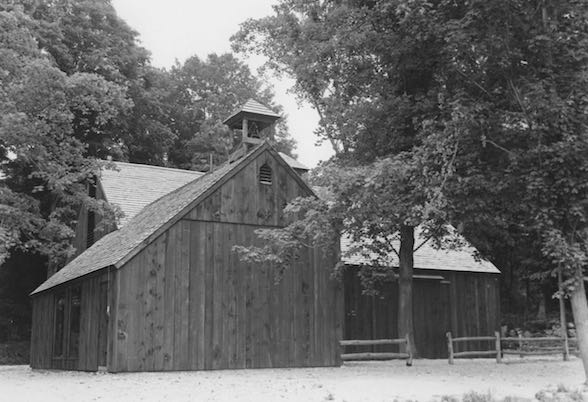
A view of the Sloane-Stanley Museum 28 May, 1969. Arthur Hamm, Contractor
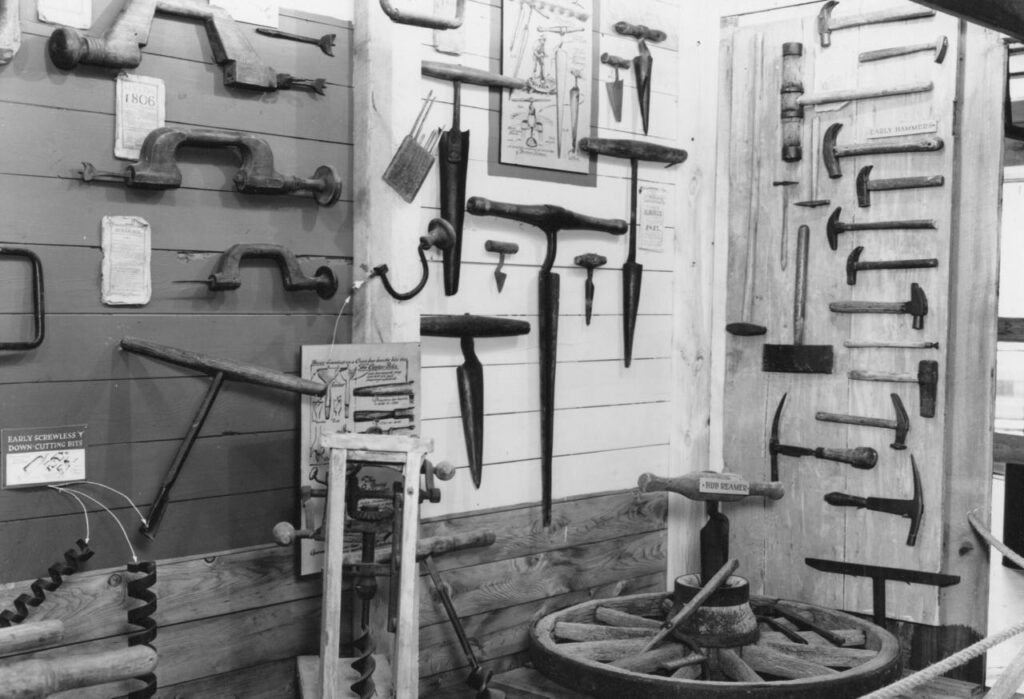
Interior of Eric Sloane Museum as it appeared in 1969
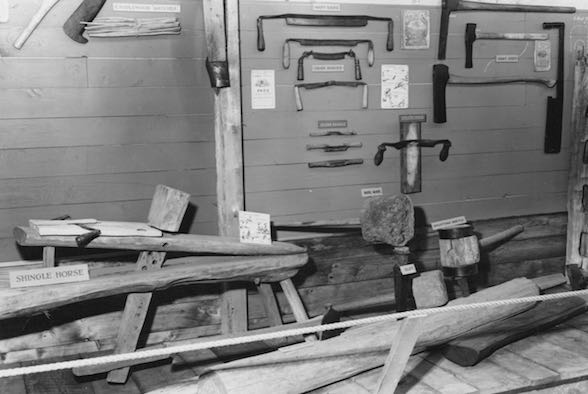
Interior of Eric Sloane Museum as it appeared in 1969
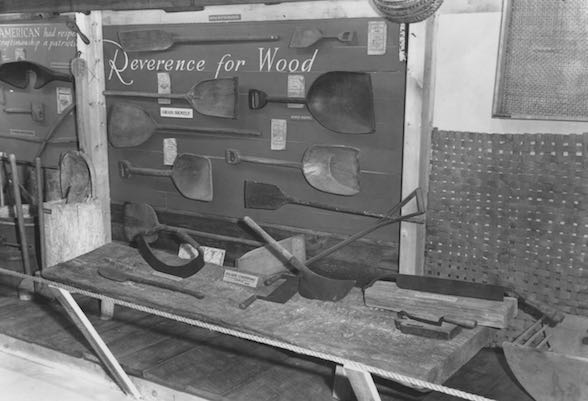
“The museum is also unique and remarkable in the way that Eric conceptualized the exhibits. It is a misnomer to refer to the Eric Sloane Museum as a museum of early American tools – the Eric Sloane Museum is a museum of early American art, housed in the creation of a visionary and talented American artist. Eric’s conceptualization of the museum, perhaps best exemplified in contemporary press photographs of his 1968 show at the Brookfield Craft Center in Brookfield, Connecticut, is that hand-made early American tools are a unique form of art worthy of installation in any museum…It was in this era of his career that Sloane was experimenting with “placements” – works in which he mounted early American tools on plaques for display. To these placements Sloane would nail early almanacs or add titular and descriptive wording in his distinctive lettering style. It was Sloane’s response to Modern Art. When reporter Nancy Keefe asked about the significance of his placements, Sloane responded that they were a “…reply to collages and montages and mobiles and stabiles and assemblages and constructions and pop art and junk sculpture and all the avant-garde stuff that’s being forced upon us these days.”5 Wow. To which an insightful Keefe wrote:
It is possible that the differences between Sloane’s “placements” and “avant-garde stuff” are more apparent than real. Though pop art, those magnified images from commerce and the comics for the purpose of exalting the beauty in everyday things, has been mainly of Brillo boxes and Campbell’s soup cans, it is really only a matter of deciding which day’s everyday things you will exalt. It might just as easily be haystacks and hand drills as Brillo and Campbell’s.6 – From Symbols of American Spirit: 50 Years of the Eric Sloane Museum.
One can get a sense of just how Sloane conceptualized how early American tools could be examples of modern art by examining the two photographs below. Both were taken at the Brookfield Craft Center in Brookfield, Connecticut in August of 1968:
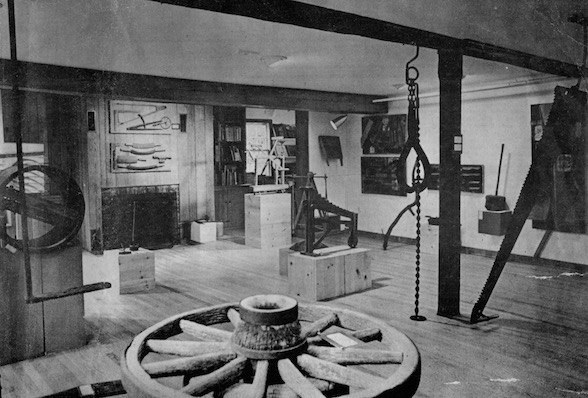
These photos of Eric’s 1968 show at the Brookfield Craft Center reveal how the artist conceptualized early American tools as American art, as well as how he mimicked brilliantly the look and feel of modern art displayed in a gallery setting.
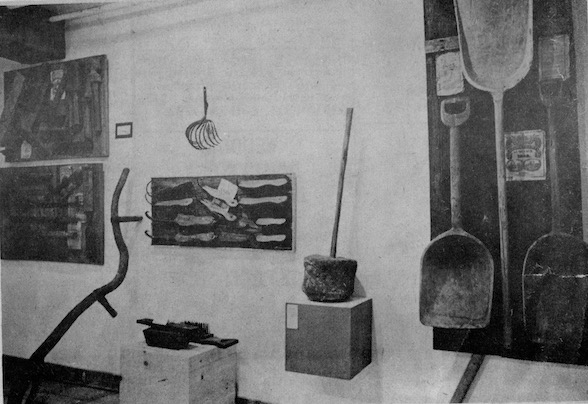
Comparing these two photographs with the ones taken approximately a year later in the Eric Sloane Museum, it is clear that Sloane’s Brookfield show emphasized the artistic, as opposed to the utilitarian, aspect of early American tools. Whether due to space, financial, or other limitations, the ethos of the Brookfield show did not permeate the installations at the Eric Sloane Museum.
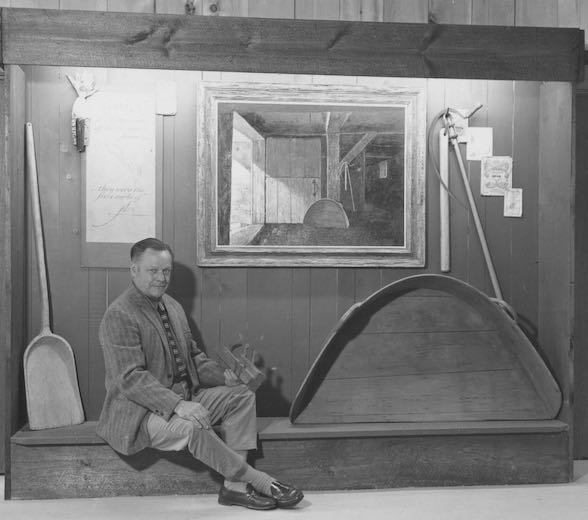
Eric Sloane poses in the foyer of the newly opened Eric Sloane Museum
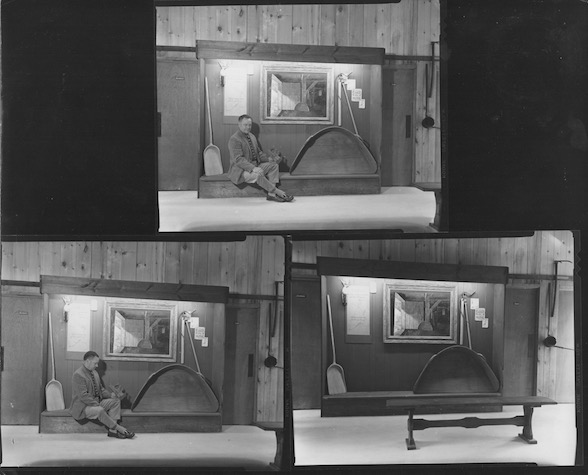
If you would like to learn more about the history of the Eric Sloane Museum as well as the collection of Eric Sloane paintings housed within, consider Symbols of American Spirit: 50 Years of the Eric Sloane Museum, just released and limited to 50 copies. Symbols of American Spirit is presented in two parts. Using numerous photographs in illustrations, Wil explores the earliest history of the Eric Sloane Museum in part one. In part two, Wil presents the entire art collection through more than two-dozen full color gallery photographs. Wil’s informal and engaging writing style – supplemented with anecdotes and little known facts about how Sloane approached painting – feels more like a private tour of the collection than a formal treatment of the artwork. The result is at times a playful, at times a profound – but always a fascinating – look at the man, his museum, and his art.
